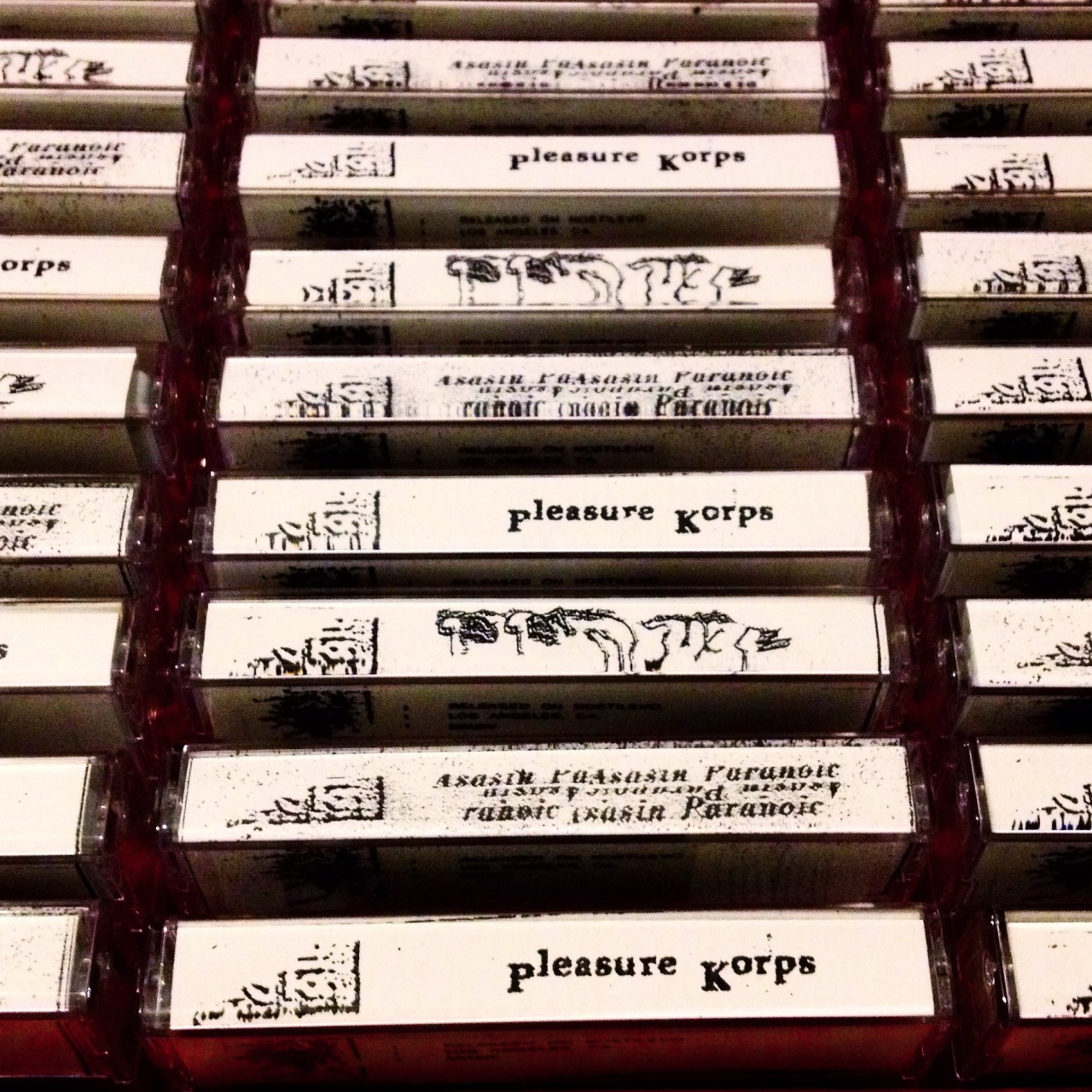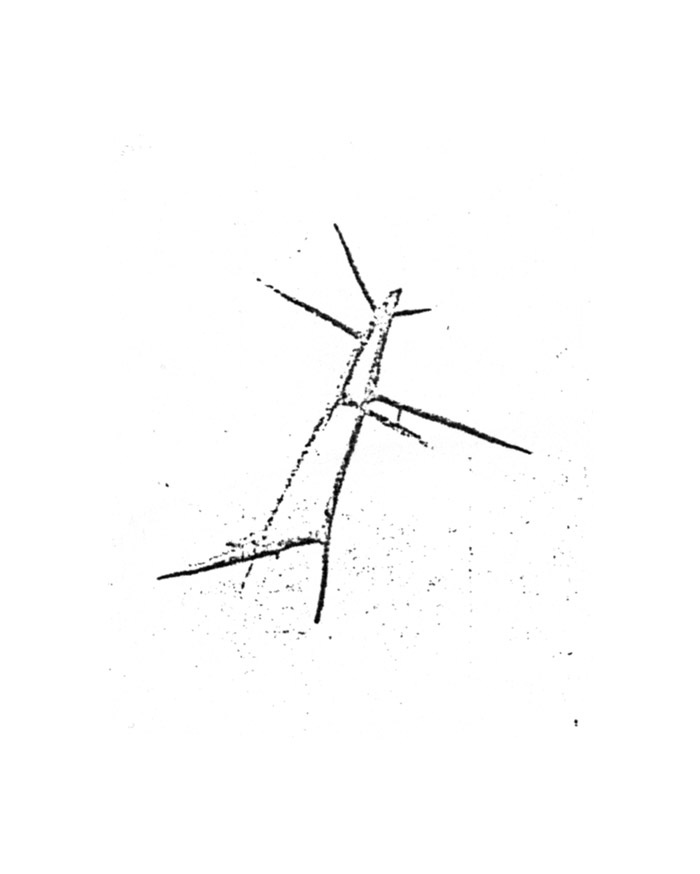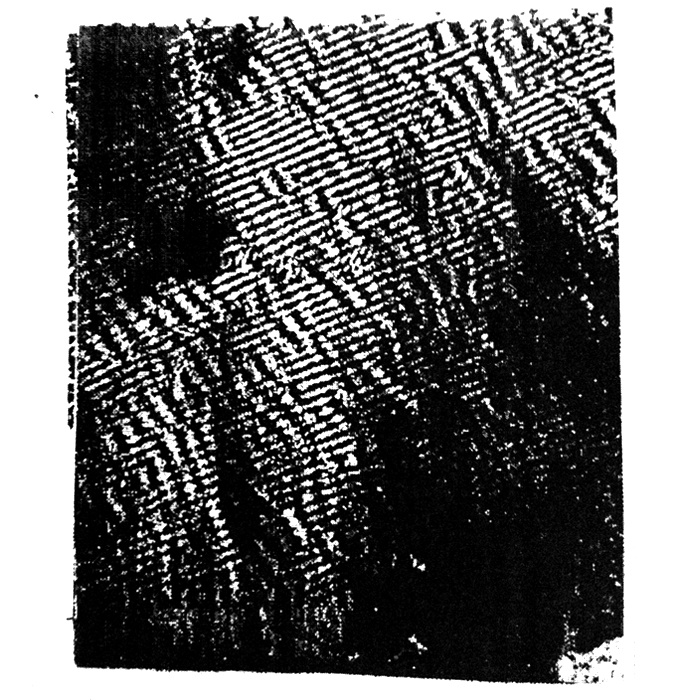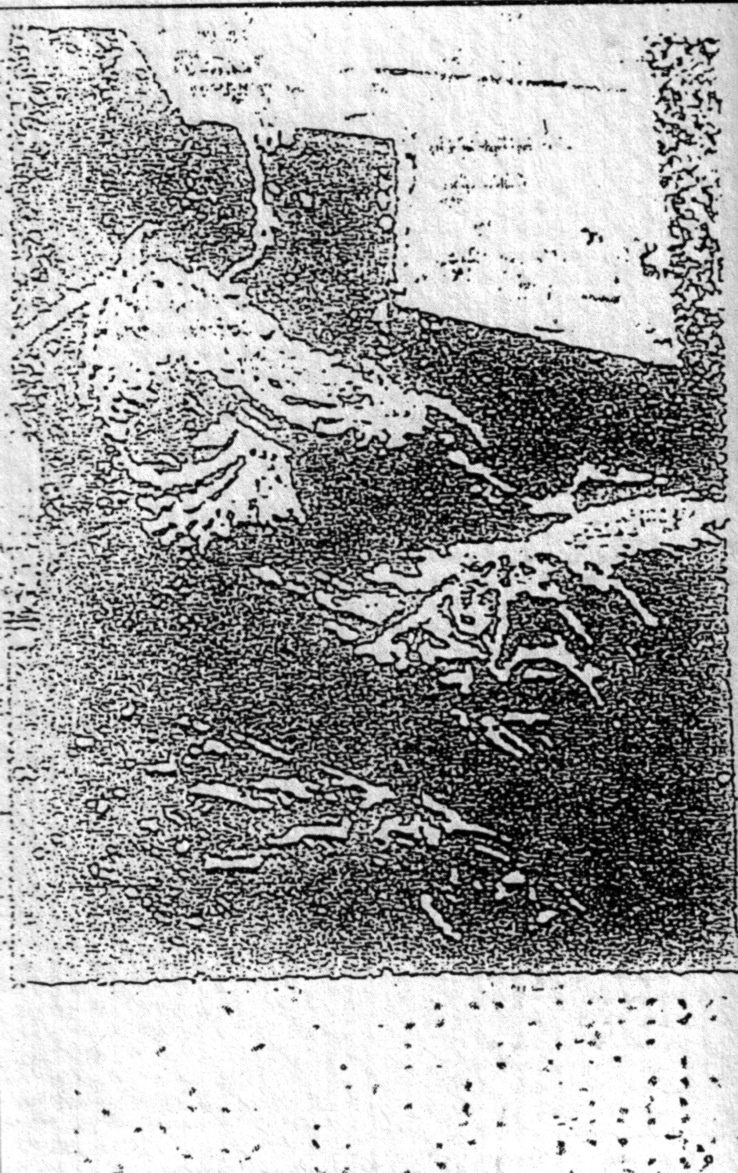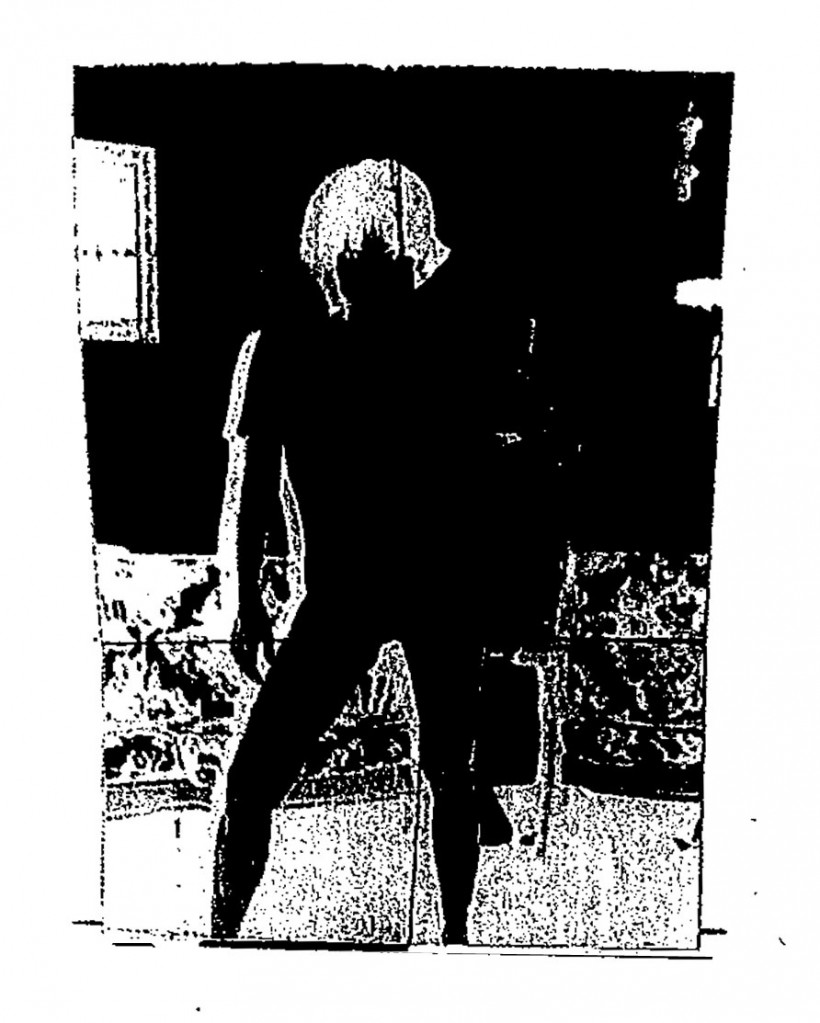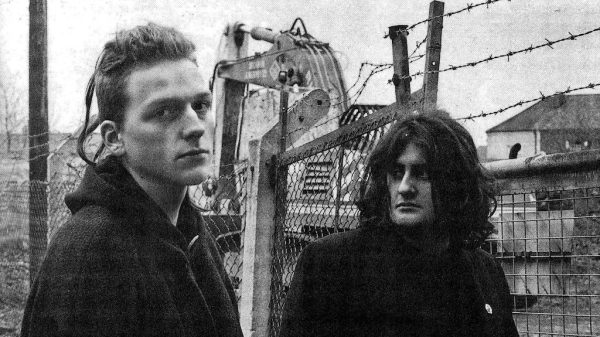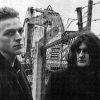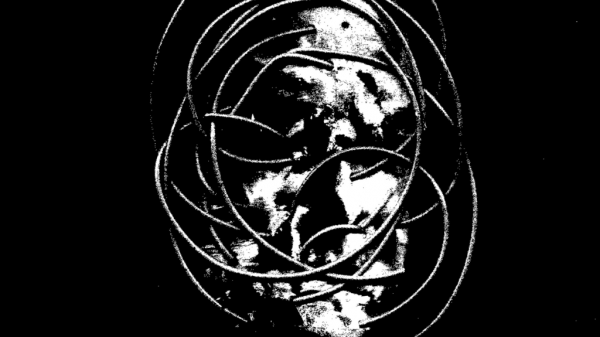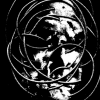For Nostilevo, an industrial label known to release small batches of illegible monochrome cassettes, a vinyl release is news. Come out with it. We fall on our faces each year to the wave of barely known artists and their impeccably constructed cassette cases carrying patches, pins, and/or stickers. If you have the money to invest in these niche genres, where is your time to listen to each release without bastardizing the art with inattention? It can be a challenging life. But when a label like Nostilevo is willing to invest in Staccato Du Mal with a vinyl release, shouldn’t we take notice? This article is a call to listen. Here, a conversation with Khristopher Reinshagen, Nostilevo’s sole member, provides context for El Mago En Ti.
(Note: Nostilevo was uninterested in dialoguing and providing a general statement on his label and its sound. He wanted to engage specific records that interested us both. Thus the dialogue tends towards a conversation, something like instant message, rather than the rigid Q&A we expect from an interview).
As to beginning a dialogue, a gloss of the label’s history is fine by me. My interest in Nostilevo began ignorantly after hearing York Factor Complaint’s The Grieving Process .
I reoriented myself with the label this past year upon buying Corporate Park’s Mise En Abyme.
The record scratched a musical itch. For the past year I’ve been digging a lot of “dark ambient”, specifically records released on Cold Meat Industry (like Brighter Death Now) and Loki Foundation (like Dagda Mor), as well as, revisiting Throbbing Gristle. I understand that Nostilevo releases varied sounds but I nevertheless see sonic similarities between your label, those two labels, and Gristle. This is where I’m coming from when I proposed the idea.
K: Those are two of my favorite tapes, ever. For me, that YFC release, while they might not exactly sound like SPK, brings to mind that same violence you hear on early SPK bootlegs. You know, pre-metal dance. The Corporate Park also channels that deep early industrial aesthetic. I haven’t met Jonah or Shane in person, but I have seen what their industrial cassette collection looks like and it’s somewhat jaw-dropping. Honestly, I haven’t heard much like either of those tapes over the past few years in terms of what American experimental cassette culture is like, and I’d like to think I’ve kept up well enough during the past decade. It seems like mostly what was popular since I started getting involved was channeling the Broken Flag or Japanoise/Macronympha aesthetic – harsh noise, power electronics, pushed to the max, high contrast BDSM & gore culture etc.; or on the flipside, channeling the Michigan basement noise scene of the early 2000s. I don’t keep up as much with that stuff nowadays… but it does seem like the cassette industrial culture is going thru a major resurgence as we speak between the likes of Greh with Chondritic [Sound] and some of what the Ascetic House dudes are doing and so forth. I think both that York Factory Complaint and especially Corporate Park tape, just speaking as a listener and not the dude who released them, stand out as very important, urgent releases.
The SPK that sticks with me is Auto Da Fe, Leichenschrei, Last Attempt At Paradise, Information Overload Unit and Field Report San Francisco (and other boots from that lineage).
Ritual Howls (III) Cover
Pleasure Korps Blessings
There are few points you bring up I would like to engage further. I agree that Corporate Park, as one of your more recent releases, stands out as something familiar, but displaying a new styling. Do you find artists to be meditating on new subjects (beyond BDSM and gore) and thus creating new “industrial” sounds? Can a resurgence be summed up in this way?
That type of imagery will always be profound in harsh electronic music and for good cause, but it is refreshing to see a group like Corporate Park kind of step outside of that conformity. I feel like if you stay in a rut or stick to conformity for too long as an artist, it will be the death of your creativity. New ideas must be carefully examined always or else the point gets lost.
To the tourist, there’s something invigorating about Detroit’s sights, but did the city become all too much for you?
I am almost 30, and lived there, in the city proper, for the better portion of my life. It was time for a change. It’s changed quite a bit over the past decade, though I was still not pleased. Los Angeles is an entirely different beast, and there are elements of this city that really make me passionate about what I enjoyed in Detroit, though it’s not an equal comparison. Many factors contributed to my move outside of the desolation. Weather and being highly subjective to seasonal depression over the wintertime was one of them. I’d also spent a bit of time here when I was younger, so California isn’t strange to me.
The visuals that compliment each release caught my eye. I’m not as learned in terms of art history, but I would like to engage the visuals while talking to you.
The way I did things when I was younger was majorly influenced by certain common design ethics you’d see in some early 2000s cassettes. I worked primarily with computers to design, and was kind of teaching myself along the way. There’s a lot of sloppy stuff, but as with any project that you start as a youth, while you’re still kind of figuring out life all together, I understand that there’s a learning process occurring. And in that case, if you own one of those tapes or records of mine from that time, you are in addition involved in the process. Sometime around 2007 or 2008, my closer friends were starting to dabble in using Xerox as a medium for their artwork, and as I took up a new desk job around then and so I gained usage to a xerox after-hours, things just kind of went that way. Felt more organic, so I stuck with it. Plus it looked better. Though I felt I had trouble for a stretch getting comfortable with an idea or aesthetic on the label. There were a number of reasons why I decided to drop doing my earlier label, Nurse Etiquette, and start Nostilevo, but looking back, Nurse Etiquette felt disorganized, so doing this was kind of a way to wipe the slate clean and attempt some actual focus and direction, without the weird clutter. I’m not sure exactly why that created such a creative blockage, but it seemed to get my gears moving better. That was also around the same time where I realized that art and music wasn’t a hobby any longer, it was truly engulfing my life and the only way in which I felt normal really was when I was creating art or making music. TG was a huge influence then, along with Bain Total/Die Form and Etant Donnes, Ramleh/Broken Flag, G.R.O.S.S., and a long list of others… I’m based in LA now, but was raised and lived in Detroit proper for the better part of 20 years… It can oddly be very hip to say you’re from Detroit nowadays, though not so much when I was growing up. I can’t remember the 80’s so well, but the 90’s were harsh. It was not fun there. You can certainly hold up many of those TG/Industrial Records releases, or others of that ilk, and position their imagery next to warehouse in Detroit back then, or even now, and it would be a comparable mirror match.
Knækkede Stemmer: Betynget Af...Cover
Siobhan: Current Affairs Cover
Does ambiguity appeal to you? It is a different ambiguity from putting a war criminal on the cover of a record, thus goading the viewer to question your morals.
Ambiguity is appealing, but it’s not engulfing or really that important. I’ll confirm now that the man whose face graced many of the titles last year and slowly becomes distorted is not Stalin, nor anyone of any particular political ideal. He does have an identity however, and may even still be alive. For the sake of ambiguity though, I’ll continue to keep his identity secret. The reason that you see images of Nazi generals on early 80’s industrial tapes come from an entirely different situation happening at the time though, not just in art but in the social and political climate in Europe. I can’t necessarily relate to that from my upbringing in Detroit, and I’m not directly experiencing that in LA. I’ve been guilty of taking advantage of that kind of imagery when I was younger, but understanding more now, I can’t accept utilizing some of those topics in my work. The birth of industrial and power-electronics or noise was about shocking the senses and forcing you to come to terms with a myriad of issues for deliberate reasons. It gets misconstrued over time as being either forcefully racist or having some kind of fucked agenda, or just worthless shock value. It spoke specifically for a time and continues to struggle with being understood today. We’re flying off the handle though, I didn’t mean to talk about industrial politics.
In terms of ambiguity when it comes to Nostilevo and the imagery I present, it’s less about trying to hide words and information in distortion. My approach at minimalism is the main ideal, then allowing patterns to form densely around the information.
My artwork is inspired by a design philosophy of being continually bored with my common aesthetics. I seek a result from my work that at the moment may particularly confuse me or looks foreign and un-relatable. A few years ago I began utilizing Amharic texts for this reason. Not just random characters, but things that would translate if the dots were connected properly, though it is a difficult language to translate properly. There’s obviously still a uniformity to my work, but any time I feel like I have to stick to a regimented structure or stay inside of some box, I will naturally challenge that and see where else I can take it.
How did you encounter Amharic texts? I didn’t expect that answer. Has that language, its letters led you to think about typography for your records differently? Lastly, are you still using a Xerox machine?
Amharic is the primary language spoken in Ethiopia, and Ge’ez is an ancient version of that which is a bit more uncommon today. I had a mild fascination with some Ethiopian culture when I was younger, so I had been familiar with little bits of the language. I think it appears for the first time on the Burial Hex LP I did… I wanted that record to have an archaic feel in the presentation. Masking some of the texts behind an ancient language like Ge’ez brought it together. Some of the Amharic/Ge’ez you see early on in it’s appearance on Nostilevo are very rough translations that in fact are most likely incorrect. I was trusting a font file to guide the way on translating some of the characters, but many of the characters in those files aren’t actually direct translations. They’re versions of the language translated over to an English keyboard/lettering/syntax. I would later just pull things from Ethiopian books with an English translation coupled, until I found a more direct translator, for example, on the first pressing of Siobhan’s Mind Court. I’m utilizing the font file as my translator, assuming that the cover says “Siobhan – Mind Court”, but in the end it translates to some moderate gibberish. Later, on the first Ritual Howls cassette, the texts I used on the spine actually translate to “New Testament” and are just pulled from the cover of a leather bound Ethiopian bible I’d found. I understand that I use these texts mostly from an aesthetic standpoint for the sake of art, but I think it’s important to at least attempt to get it as close to proper as possible. Not that anyone may even see my tapes who understand Ge’ez, but it’s urgent to me that if and when I use it that I keep it as legitimate as I can so I’m not exploiting it in the name of my art. That would be highly disrespectful to anyone of Ethiopian lineage, in my opinion. This brings back the matter of ambiguity… I’ve been inspired / intrigued along the way by crude black metal tapes that you had to struggle to figure out what they were. Forcing an emphasis on what the music means. Like I said, I don’t find it urgent, but I am still fascinated by it.
My inspirations / influences over time… off the top of my head: Hands To/Big Body Parts, G.R.O.S.S., Die Form/Bain Total and Etant Donnes, Rozz Williams/Premature Ejaculation, Les Legiones Noires, Ramleh/Broken Flag, Mother Savage/Macronympha, New Blockaders, Come Org., Whitehouse, various Japanese D-beat/noise core, various early European minimal synth and the most modern WIERD!, Galakthorro, Klaxon, New European Recordings, Throbbing Gristle/Coil/Psychic TV etc. and a ton more I’m forgetting. That stuff guided my interests over the decade in all sorts of ways.
The 3LP WIERD Vol. 1 compilation came out in 2006 and was a big deal for me. I was primarily a Michigan basement noise kid and some of my comrades in that scene were involved with Wierd, so this thing started popping up at parties and conversations all of the time. It’s a collection of all of these new minimal synth wave / dark pop / cold electronic bands worldwide. A sound that was kind of hidden to me in modern terms and figured had somewhat died out in the 80s. That was my ignorance at the time. To see this vast collection of musicians tried and true to that ethic and kicking now, it was awesome. I got obsessed with that collection and you can see the wear on the two copies I’ve blasted through. These also came out around the same time I was playing around with synthesizers for the first time; a Realistic MG-1 and an Alesis drum machine a friend gave me. I would use them in an improv setting not really sure what ADSR or resonance meant except it kind of tweaked the sound a certain way. That compilation was perhaps was my biggest influence to start playing around with electronics more seriously and learn to compose. That whole comp is special, but Ramiro from Staccato du Mal has a track called “Departures” on there which still remains one of my favorite electronic pieces of all time .
I fell in love with his other records ultimately and so I decided to reach out and invite the offer to release something. He was into it, I was stoked, so we decided to do this record, which was actually recorded during the WIERD comp times and is essentially his unreleased debut LP.
So you did play music; do you now?
Yes. My primary project is called L.F.A., which as of this period stands for Liable for Abuse. Just finished a new record that will be out on Chondritic Sound in a few weeks, entitled “Angst”. L.F.A. is my take at an industrial solo project. I’ve gone thru many phases of the project though I feel most happy with the result on Angst. It’s not perfect (nothing is) though it is the closest I’ve gotten to the original idea of the project. I’ve also done a few recordings and shows the past year as Men of Bissau, which I’m not exactly sure how to coin that one. Some may say it’s more “experimental” or “noise” than LFA, though there’s maybe even more composition/song writing involved here than with my other works
I’ve got a number of collaborative works in the wings with Craow, David Allen, Siobhan, Greh Holger and others that will see the light of day at some point this year. Everything mentioned falls somewhere in the realm of experimental electronics.
Obviously, your interests can’t be confined to old cold electronics, but was that an impetus to begin releasing music, that is with Staccato?
At the time I was involved in a noise label and started trying to seek out minimal wave cassette products… there wasn’t much. That was a bit of the influence on my directional shift. Industrial/PE stuff was around like always, but not really that Wierd sound. It took a while to get moving mostly because I couldn’t find anyone interested in doing a cassette, which coincidentally was around the same time I started diving into making my own ignorant synthesizer music. LFA (then Liable) in some sense was a response to that query, though I didn’t realize an actual cassette or anything for a couple of years. You see a lot of that stuff now, then it was a bit scarce.
I don’t know if you’ve read about the death of Edgar Froese, do you have any thoughts on him and his music? I don’t think Tangerine Dream fits in with your euro minimal synth. For me, “prog rock,” specifically Tangerine Dream and a few others, were integral for me as a route to listening to more electronic music.
Tangerine Dream is a large chunk of my being. It might not read with the type of things I do but T.D. and specifically many of Edgar’s records were and still are a huge part of my life. They become a bit more cheese prog rock later on, but those early records are essential for anyone with even a remote interest in electronic music. I’m very picky and the wrong record at the wrong time, even by just slim margins can send me into a negative mood swing really quickly. Froese’s Aqua, Epsilon, Stuntman and all of the early T.D. catalogue are immune to that. They’re perfect for anything in my life.
I am thankful to KR for his time and thoughts.

